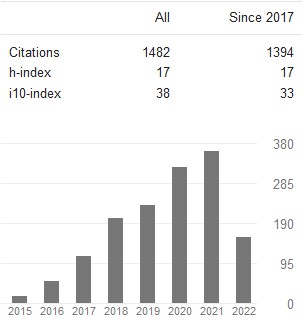Epitope-based molecular docking studies of allergenic proteins with immunoglobulin protein during type I hypersensitivity reaction
Abstract
Objectives: The identification of B-cell epitopes is a challenging approach to explore the antigen-antibody interactions for diagnosis and therapy of hypersensitivity reaction. In our present study, an in-silico approach is used to investigate the interaction of pollen allergen EXPB1 (Zea m 1), pollen allergen from maize with IgE molecules of human. Material and Methods: Paratope of human immunoglobulin E is identified using site-specific proABC predictor method. Phylogenetic analysis of Zea m 1 reveals that 13 pollen allergens from different grasses, maize, timothy grass, velvet grass, Bermuda grass, canary grass, rice and perennial rye grass are close homologs to our query allergen EXPB1. Among them Phl p 1 pollen allergen from Phleum pratense is identified with 60% identity with Zea m 1. Experimental B cell epitopes of Phl p 1 are known and we have verified those epitopes with PIPER, molecular docking software. Thus, interacting amino acids present both in epitopes and paratopes are visualized and confirmed with predicted paratopes. For all homologous allergens, the interacting amino acids i.e. epitopes and paratopes have been identified using the two docking programs, DOT and ZDOCK. Results and Conclusions: Negative binding energies of all pollen allergens with immunoglobulin E confirm their allergenicity. Thus, all allergens become cross reactive with maize allergen. The multiple sequence alignment for all homologous sequences reveals that the positions of antigenic peptide of Zea m 1 sequence are well conserved in its homologs and responsible for cross-reactivity. This cross-reactivity identification will help us to identify the immunotheraputics e.g. vaccine designing for these β expansin family protein allergens during pollinosis
Keywords:
Pollen allergens, Zea m 1, Phl p 1, B cell epitopes, molecular docking, cross reactivity predictionDownloads
Published
How to Cite
Issue
Section
Copyright (c) 2017 Anamika Basu, Anasua Sarkar, Piyali Basak

This work is licensed under a Creative Commons Attribution-NonCommercial-ShareAlike 4.0 International License.



 Journal of Innovations in Pharmaceutical and Biological Sciences is licensed under a Creative Commons Attribution-NonCommercial-ShareAlike 4.0 International License. Based on a work at
Journal of Innovations in Pharmaceutical and Biological Sciences is licensed under a Creative Commons Attribution-NonCommercial-ShareAlike 4.0 International License. Based on a work at